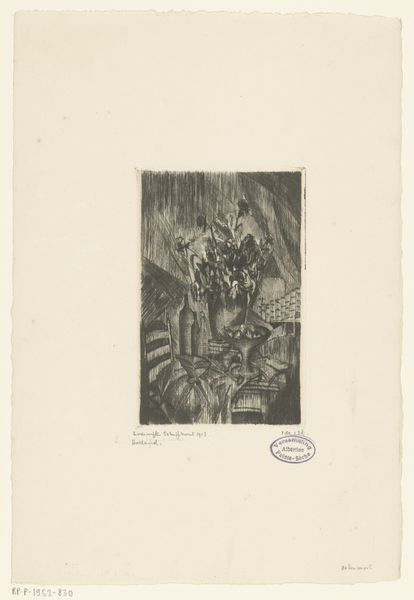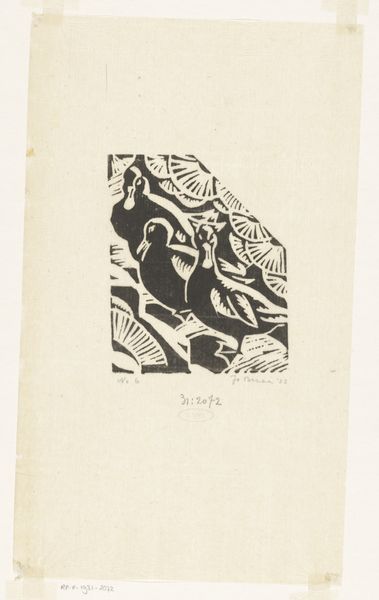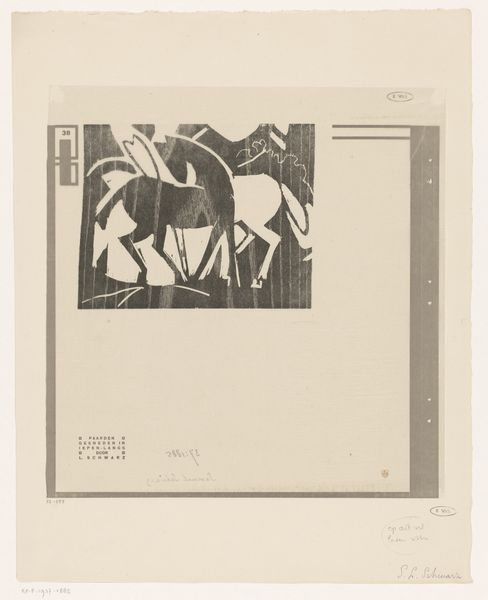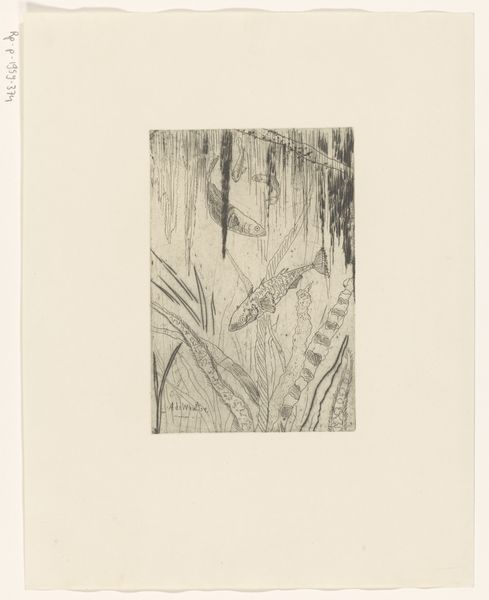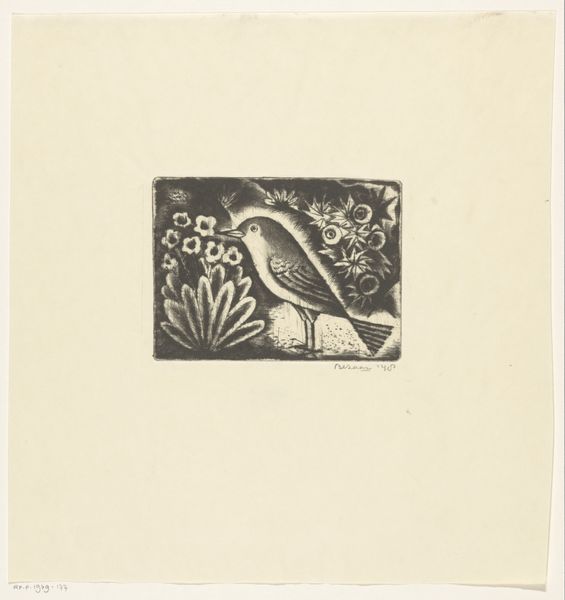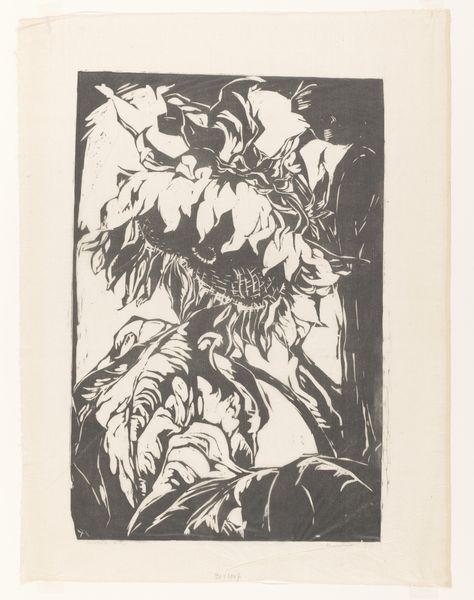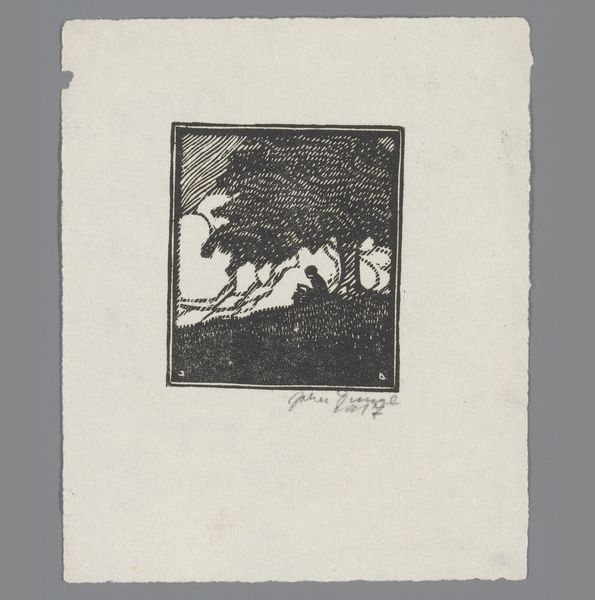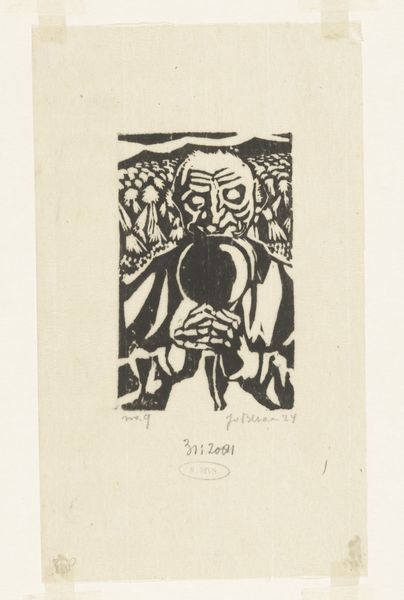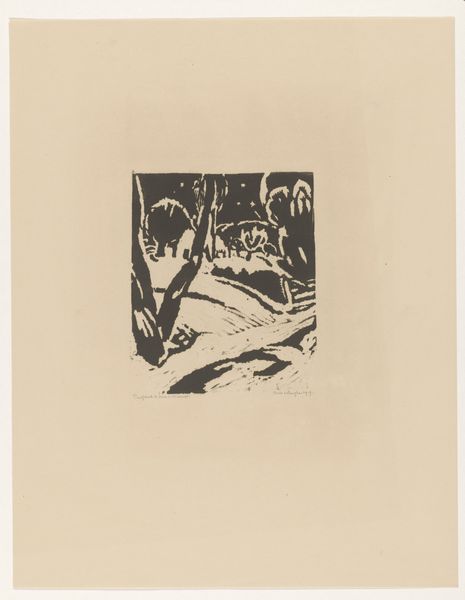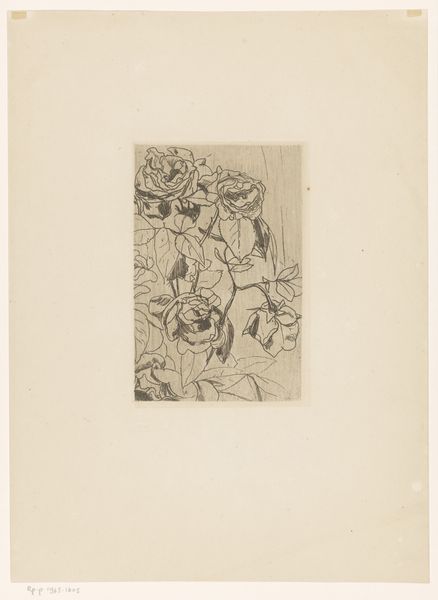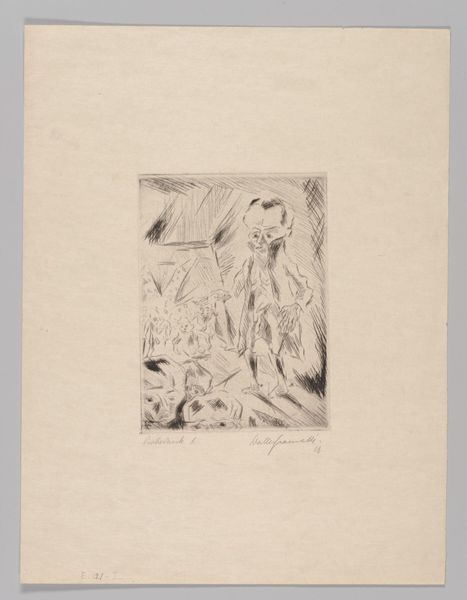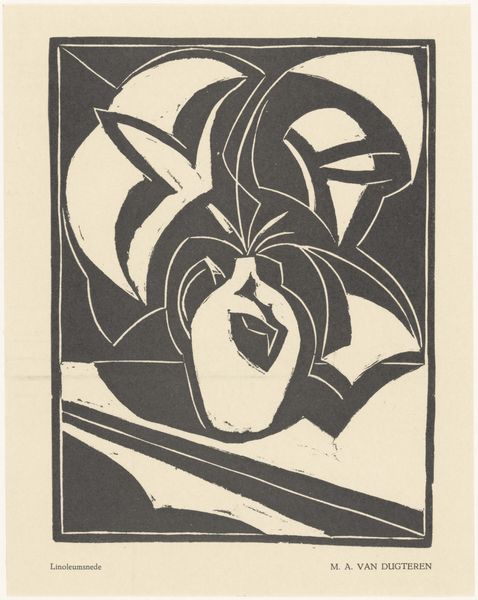
print, woodcut
#
art-deco
# print
#
figuration
#
woodcut
#
line
Dimensions: height 298 mm, width 226 mm
Copyright: Rijks Museum: Open Domain
Editor: So, this is “Deirdre,” a woodcut print by Bernard Essers, created sometime between 1917 and 1919. It's really striking; the sharp lines and high contrast give it such a dramatic feel. I am really drawn to the use of line here. What catches your eye when you look at it? Curator: What immediately stands out to me is how this work participates in the wider visual culture of its time. The clean lines and stylized figures place it firmly within the Art Deco movement, which, of course, reflected the post-World War I desire for a modern, streamlined aesthetic. I wonder, do you think this aesthetic aligns with broader social trends? Editor: That's fascinating. I hadn't thought about the connection to post-war sentiments. It seems like the simplification of form could represent a kind of rejection of pre-war artistic styles and values. How do you think museums have shaped our understanding of Art Deco in the present day? Curator: Museums play a crucial role. They present a curated narrative, highlighting certain aspects of the movement, solidifying its place in art history and in our collective memory. They can influence what is seen as significant or representative of the era. Are there other socio-political undercurrents that might also have influenced the printmaking process in that period? Editor: Well, printmaking itself, as a more accessible and reproducible medium, democratized art in a way. Maybe the Art Deco printmakers had socio-political motivation! Curator: Precisely! Printmaking provided a venue to influence broader public engagement, while enabling more accessible aesthetics for ordinary people to possess. It’s a great illustration of art being intimately intertwined with societal dynamics. Editor: This has really broadened my understanding. Thanks! Curator: Indeed, it reminds us how art always exists within and responds to a complex web of historical, social, and cultural forces. A helpful framework to continually employ as we analyze works.
Comments
No comments
Be the first to comment and join the conversation on the ultimate creative platform.
